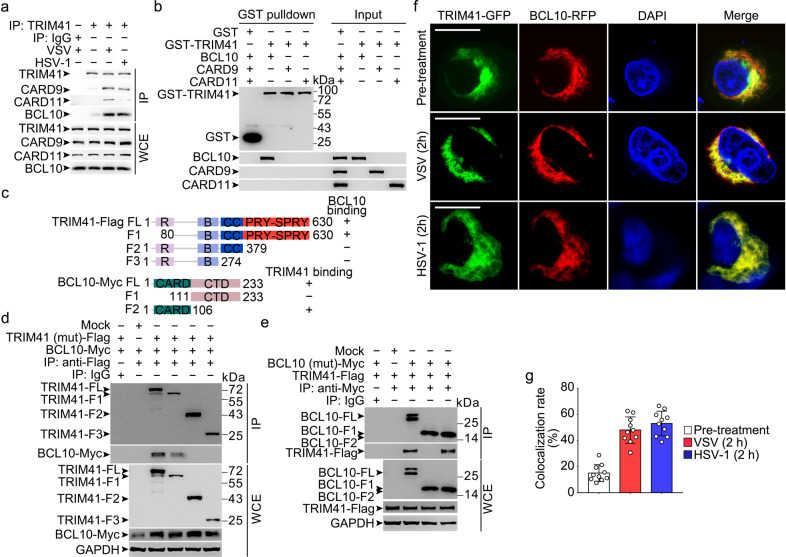Recombinant Mouse CARD11 Protein
| Cat.No. : | CARD11-2728M |
| Product Overview : | Recombinant Mouse CARD11 full length or partial length protein was expressed. |
- Specification
- Gene Information
- Related Products
- Citation
- Download
| Species : | Mouse |
| Source : | Mammalian Cells |
| Tag : | His |
| Form : | Liquid or lyophilized powder |
| Endotoxin : | < 1.0 EU per μg of the protein as determined by the LAL method. |
| Purity : | >80% |
| Notes : | This item requires custom production and lead time is between 5-9 weeks. We can custom produce according to your specifications. |
| Storage : | Store it at +4 ºC for short term. For long term storage, store it at -20 ºC~-80 ºC. |
| Storage Buffer : | PBS buffer |
| Gene Name | Card11 caspase recruitment domain family, member 11 [ Mus musculus ] |
| Official Symbol | CARD11 |
| Gene ID | 108723 |
| mRNA Refseq | NM_175362.2 |
| Protein Refseq | NP_780571.2 |
| MIM | |
| UniProt ID | Q8CIS0 |
| ◆ Recombinant Proteins | ||
| CARD11-6717H | Recombinant Human CARD11 Protein, Myc/DDK-tagged, C13 and N15-labeled | +Inquiry |
| CARD11-10718H | Recombinant Human CARD11, His-tagged | +Inquiry |
| CARD11-7865H | Recombinant Human CARD11 protein, His-tagged | +Inquiry |
| CARD11-301642H | Recombinant Human CARD11 protein, GST-tagged | +Inquiry |
| CARD11-01H | Recombinant Human CARD11 Protein, Myc/DDK-tagged | +Inquiry |
| ◆ Cell & Tissue Lysates | ||
| CARD11-7850HCL | Recombinant Human CARD11 293 Cell Lysate | +Inquiry |
TRIM41 is required to innate antiviral response by polyubiquitinating BCL10 and recruiting NEMO
Journal: Signal Transduction and Targeted Therapy PubMed ID: 33640899 Data: 2021/2/28
Authors: Zhou Yu, Xuelian Li, Xuetao Cao
Article Snippet:Recombinant CARD9 (ab131800) and BCL10 (ab82241) were obtained from Abcam Inc. (Cambridge, MA).Recombinant CARD9 (ab131800) and BCL10 (ab82241) were obtained from Abcam Inc. (Cambridge, MA).. Recombinant CARD11 was obtained from Creative BioMart (Shirley, NY; Card11-385M).. Other non-specified reagents were purchased from Sigma-Aldrich (St. Louis, MO).Other non-specified reagents were purchased from Sigma-Aldrich (St. Louis, MO).

The PRY-SPRY domain of TRIM41 directly binds the CARD domain of BCL10. a Wild type BMDM were infected with VSV (MOI = 1) or HSV-1 (MOI = 5) viruses for 2 h as indicated. Then whole cell extracts (WCE) were immunoprecipitated with anti-TRIM41 antibody plus protein A/G beads. Components in the TRIM41 complex were examined by Western blotting. b 1 μg GST or GST-TRIM41 was coincubated with 1 μg recombinant CARD9,

TRIM41 mediates Lys63-linked polyubiquitination of BCL10. a - c Trim41 +/+ or Trim41 –/– BMDM were infected with VSV (MOI = 1) or HSV-1 (MOI = 5) viruses for 2 h. Then whole-cell extracts (WCE) heated in buffer containing 1% SDS were immunoprecipitated (IP) with anti-BCL10 ( a ), anti-CARD9 ( b ), or
Not For Human Consumption!
Inquiry
- Reviews (0)
- Q&As (0)
Ask a Question for All CARD11 Products
Required fields are marked with *
My Review for All CARD11 Products
Required fields are marked with *



